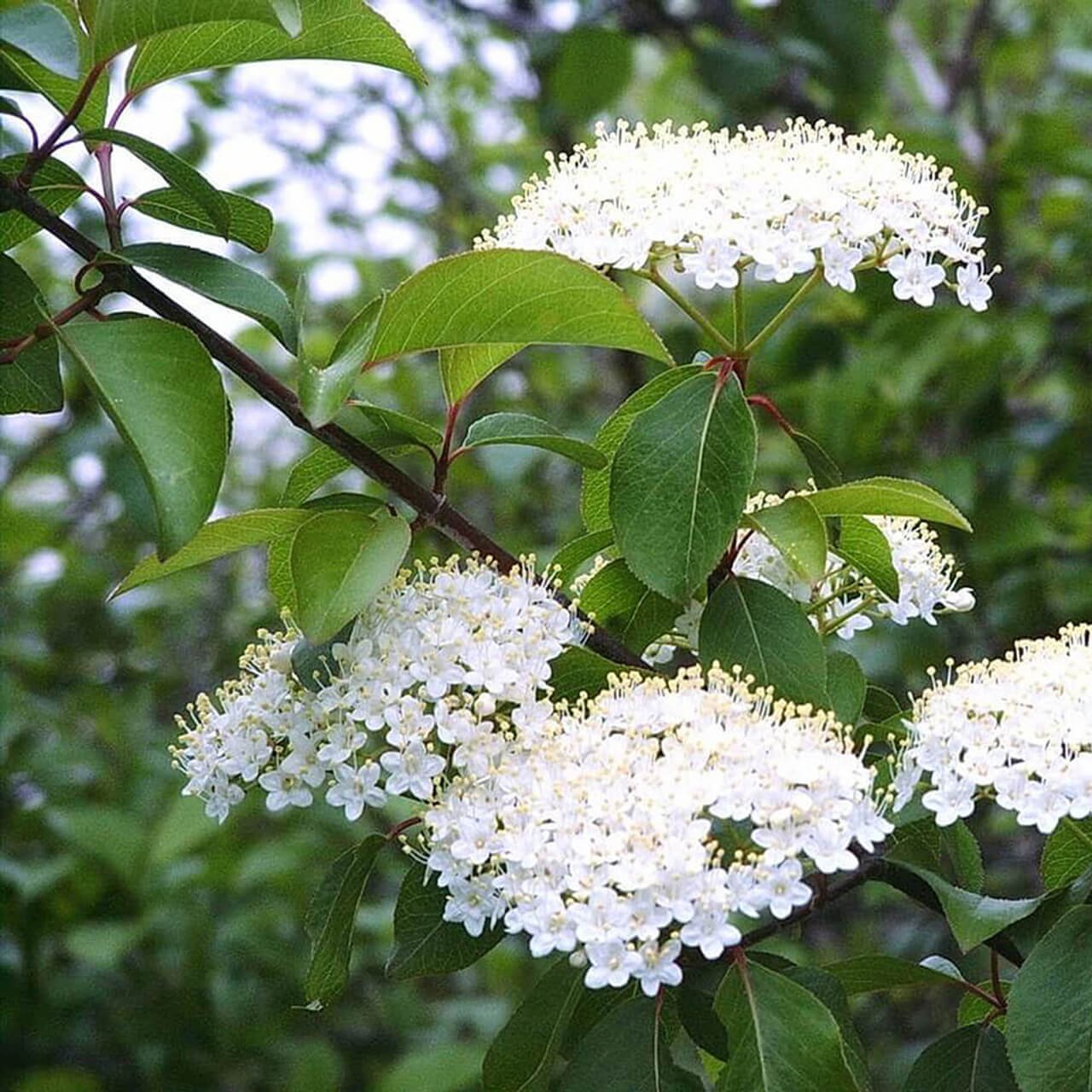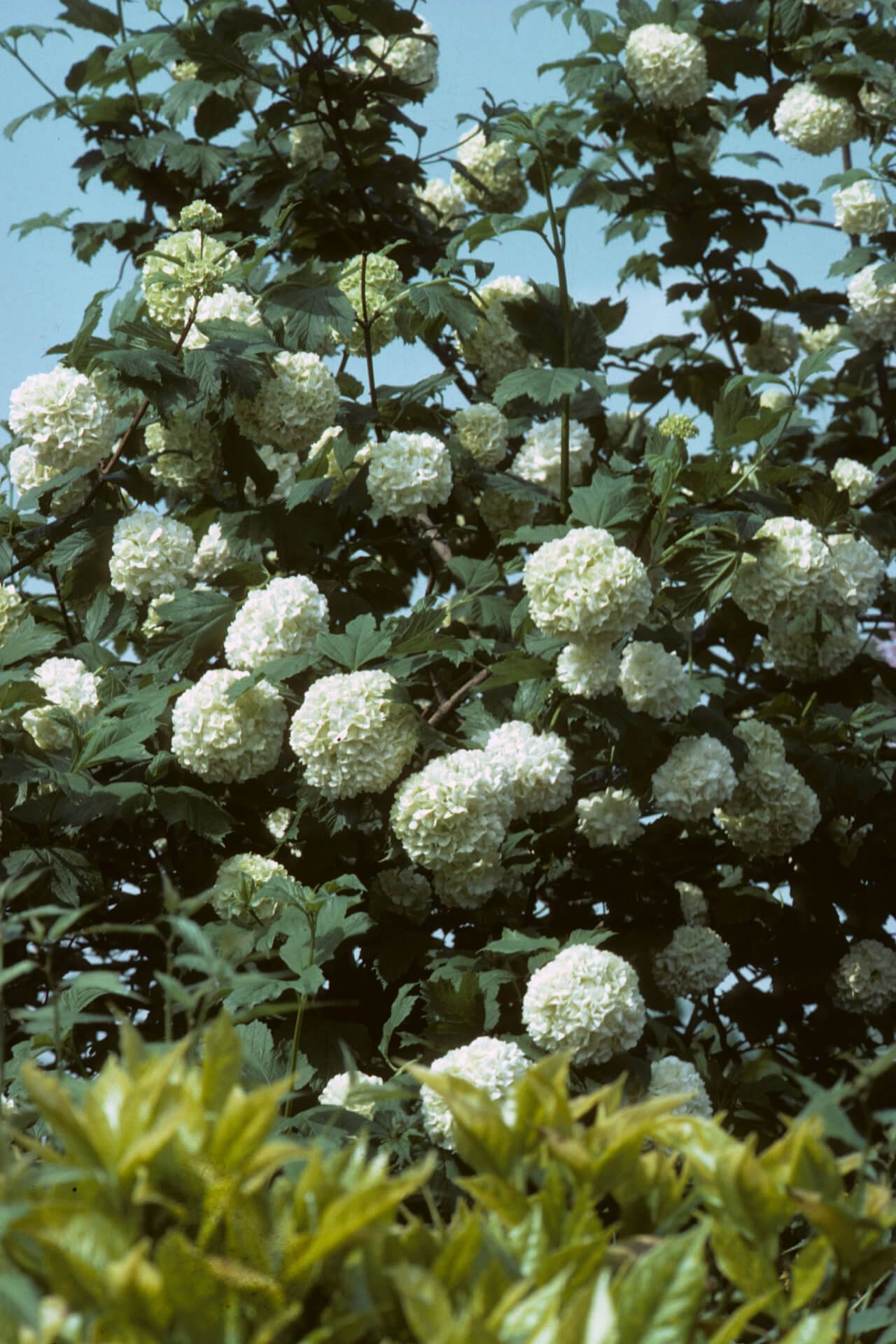Arrowwood Viburnum
This charming shrub, a North American native species Arrowwood Viburnum, is beloved by gardeners across most USDA planting zones. One reason is that it is so self-sufficient that it requires almost no help from a gardener. TN Nursery recommends this shrub for any customer who requests a low-care shrub.
It's a versatile, hardy shrub native to North America, prized for its attractive foliage, clusters of creamy white flowers, and vibrant fruit.
The gorgeous white blossoms bloom early in the season, adding welcome color to the garden when many other shrubs remain dormant.
The blue-black berries (drupes) appear in late summer/ early fall and are eaten by birds and other wildlife, aiding in seed dispersal.
Where to Use Arrowwood Viburnum in Your Landscape
Arrowwood Viburnum can reach a mature height of around ten feet. Its rounded, dense shape makes it suitable for hedges and naturalized areas.
However, many gardeners choose to shape it to suit specific garden needs. For instance, if they want to grow it as a short hedge.
Arrowwood viburnum (Viburnum dentatum) is incredibly versatile in landscaping thanks to its adaptability and year-round interest. Some Design Tips:
- Plant alongside other native shrubs like elderberry (Sambucus canadensis) and spicebush (Lindera benzoin).
- Add native perennials such as black-eyed Susan (Rudbeckia hirta) or coneflowers (Echinacea purpurea) for additional color and pollinator appeal.
- Create layers of vegetation to mimic natural ecosystems.
Arrowwood Viburnum Has So Much Natural Charm
The berries attract birds, while the flowers are excellent for pollinators.
Arrowwood Viburnum is rich in natural charm. In the early weeks of spring, the glorious, white-to-cream flowers are among the first bloomers. Each angelic blossom is petite, under a quarter-inch in width, and with five little petals that create a bell shape. Despite its diminutive size, it makes an immense impact as these tiny flowers join together in large, fluffy clusters.
The flowers fade away in a few weeks, and the four-inch long, glossy, toothy-edged emerald leaves appear for the rest of the growing season. The foliage of this shrub is full and beautiful.
The Many Benefits of Arrowwood Viburnum
Arrowwood viburnum (Viburnum dentatum) is a resilient and flexible native shrub from North America. Gardeners and landscapers hold this deciduous shrub in high esteem because of its multiple benefits in formal and informal garden designs. It delivers various benefits through its late spring white blossoms, vivid green leaves, and decorative berries, surpassing visual appeal. Arrowwood viburnum brings multiple advantages to your landscape through ecological benefits, habitat creation, and ease of maintenance.
Arrowwood viburnum stands out because of its ability to grow in diverse environmental conditions. When enough moisture is available, the shrub plays well with multiple soil conditions, including clay loa,m, and sandy soils. Because it flourishes in full sun or partial shade, it becomes an ideal selection for diverse garden environments. The arrowwood viburnum maintains strong growth across various soil pH conditions, enabling it to prosper in places where other ornamental shrubs would fail.
Arrowwood viburnum's ecological benefits make it an essential addition to any landscape. This plant's attractive white flower clusters emerge during late spring to early summer and draw various pollinators and other helpful insects. The presence of these pollinators helps sustain a garden ecosystem that displays better health and liveliness. The bluish-black berries of arrowwood viburnum reach full maturity during the late summer season and extend into autumn. The Arrowwood viburnum berries form an essential food supply for small animals when other natural resources become limited.
Another key benefit is the creation of wildlife habitat. Arrowwood viburnum features dense branches that provide protection and nesting spaces for many birds and small animals. The protective cover of arrowwood viburnum shelters garden visitors from predators and adverse weather conditions, thereby promoting biodiversity. Establishing arrowwood viburnum in your yard allows you to build a small wildlife sanctuary that supports local ecosystem health.
Both professional landscapers and residential property owners value arrowwood viburnum because it maintains its aesthetic appeal throughout different seasons. The lush green foliage backdrop enhances the visual impact of the creamy-white blooms during the spring season. As summer advances, the berries undergo development while shifting to their fully mature coloration. During autumn, leaves transform into yellow and orange shades and sometimes burgundy hues, creating colorful splashes throughout the landscape. Arrowwood viburnum provides a year-round visual appeal, making it a flexible choice for garden focal points or backgrounds.
Maintaining arrowwood viburnum requires minimal effort. The plant requires regular watering during its initial establishment phase but becomes low-maintenance after it settles. You can prune arrowwood viburnum after its flowering period if you need to shape it, but some gardeners prefer keeping it natural. Arrowwood viburnum stands out as an excellent plant option for gardeners of all experience levels because of its adaptability, ornamental value throughout the year, and benefits to wildlife. Choosing this native shrub for your garden allows you to appreciate its aesthetic appeal while contributing positively to local ecosystems.
Read more

Pine trees are conifers and comprise approximately 25 percent of all cone-bearing species. That means that pines bear cones.

Are you looking for a pretty flower or plant to add to your home or office garden? If so, then Sweet Betsy Trillium could be the flower you’re looking for. This plant is also known as a wood lily o...




